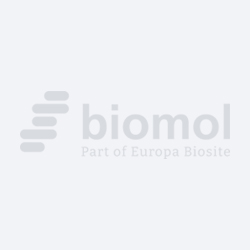Cookie preferences
This website uses cookies, which are necessary for the technical operation of the website and are always set. Other cookies, which increase the comfort when using this website, are used for direct advertising or to facilitate interaction with other websites and social networks, are only set with your consent.
Configuration
Technically required
These cookies are necessary for the basic functions of the shop.
"Allow all cookies" cookie
"Decline all cookies" cookie
CSRF token
Cookie preferences
Currency change
Customer-specific caching
FACT-Finder tracking
Individual prices
Selected shop
Session
Comfort functions
These cookies are used to make the shopping experience even more appealing, for example for the recognition of the visitor.
Note
Show the facebook fanpage in the right blod sidebar
Statistics & Tracking
Affiliate program
Conversion and usertracking via Google Tag Manager
Track device being used

| Item number | Size | Datasheet | Manual | SDS | Delivery time | Quantity | Price |
|---|---|---|---|---|---|---|---|
| ELK-ES1645.50 | 50 µl | - | - |
10 - 14 business days* |
173.00€
|
||
| ELK-ES1645.100 | 100 µl | - | - |
10 - 14 business days* |
290.00€
|
If you have any questions, please use our Contact Form.
You can also order by e-mail: info@biomol.com
Larger quantity required? Request bulk
You can also order by e-mail: info@biomol.com
Larger quantity required? Request bulk
This gene encodes a flavoprotein oxidoreductase that binds single stranded DNA and is thought to... more
Product information "Anti-AMID"
This gene encodes a flavoprotein oxidoreductase that binds single stranded DNA and is thought to contribute to apoptosis in the presence of bacterial and viral DNA. The expression of this gene is also found to be induced by tumor suppressor protein p53 in colon cancer cells. [provided by RefSeq, Nov 2010], Protein function: A NAD(P)H-dependent oxidoreductase that acts as a key inhibitor of ferroptosis (PubMed:31634899, PubMed:31634900, PubMed:35922516). At the plasma membrane, catalyzes reduction of coenzyme Q/ubiquinone-10 to ubiquinol-10, a lipophilic radical-trapping antioxidant that prevents lipid oxidative damage and consequently ferroptosis (PubMed:31634899, PubMed:31634900). Acts in parallel to GPX4 to suppress phospholipid peroxidation and ferroptosis (PubMed:31634899, PubMed:31634900). This anti-ferroptotic function is independent of cellular glutathione levels (PubMed:31634899, PubMed:31634900). Also acts as a potent radical-trapping antioxidant by mediating warfarin-resistant vitamin K reduction in the canonical vitamin K cycle: catalyzes NAD(P)H-dependent reduction of vitamin K (phylloquinone, menaquinone-4 and menadione) to hydroquinone forms (PubMed:35922516). Hydroquinones act as potent radical-trapping antioxidants inhibitor of phospholipid peroxidation and ferroptosis (PubMed:35922516). May play a role in mitochondrial stress signaling (PubMed:26689472). Upon oxidative stress, associates with the lipid peroxidation end product 4-hydroxy-2-nonenal (HNE) forming a lipid adduct devoid of oxidoreductase activity, which then translocates from mitochondria into the nucleus triggering DNA damage and cell death (PubMed:26689472). Capable of DNA binding in a non-sequence specific way (PubMed:15958387). [The UniProt Consortium] Recommended dilutions: Western Blot: 1/500 - 1/2000. Immunohistochemistry: 1/100 - 1/300. Immunofluorescence: 1/200 - 1/1000. ELISA: 1/40000. Not yet tested in other applications.. Cellular localization: Lipid droplet . Cell membrane , Lipid-anchor . Cytoplasm . Mitochondrion membrane . Nucleus .
| Keywords: | Anti-FSP1, Anti-AMID, Anti-p53-responsive gene 3 protein, Anti-Ferroptosis suppressor protein 1, Anti-Apoptosis-inducing factor homologous mitochondrion-associated inducer of death, AMID rabbit pAb |
| Supplier: | ELK Biotechnology |
| Supplier-Nr: | ES1645 |
Properties
| Application: | WB, IHC, IF, ELISA |
| Antibody Type: | Polyclonal |
| Conjugate: | No |
| Host: | Rabbit |
| Species reactivity: | human, mouse, monkey |
| Immunogen: | The antiserum was produced against synthesized peptide derived from human AIFM2. AA range:141-190 |
| MW: | 41 kD |
| Format: | Antiserum |
Database Information
| KEGG ID : | K22745 | Matching products |
| UniProt ID : | Q9BRQ8 | Matching products |
| Gene ID : | GeneID 84883 | Matching products |
Handling & Safety
| Storage: | -20°C |
| Shipping: | +4°C (International: +4°C) |
Caution
Our products are for laboratory research use only: Not for administration to humans!
Our products are for laboratory research use only: Not for administration to humans!
You will get a certificate here
Viewed

